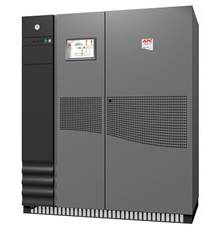9 power supply issues solved by using a UPS
 Installation of a UPS can help in reducing problems due to issues with the power supply. Often this is related to nine key issues:
Installation of a UPS can help in reducing problems due to issues with the power supply. Often this is related to nine key issues:
- Power failure - complete loss of supply (standard application for a UPS)
- Power sag - short term voltage dip in supply beyond normal operating parameter
- Power surge - short term voltage increase in supply beyond normal operating parameters
- Under voltage - longer term voltage dip lasting minutes to days
- Over voltage - longer term voltage increase lasting minutes to days
- Electrical line noise - electromagnetic and other high frequency interference
- Frequency variation - variations in frequency from normal operating parameters
- Switching transient - spike and large over voltages caused by switching operations
- Harmonic distortion - current and voltage distortion due to non-linear loads
Depending on the type of UPS installed it is possible to resolve some or all of the above issues. The simplest installation of an off-line UPS will resolve issues (1) to (3), while the installation of a full double conversion unit could potentially resolve all issues.